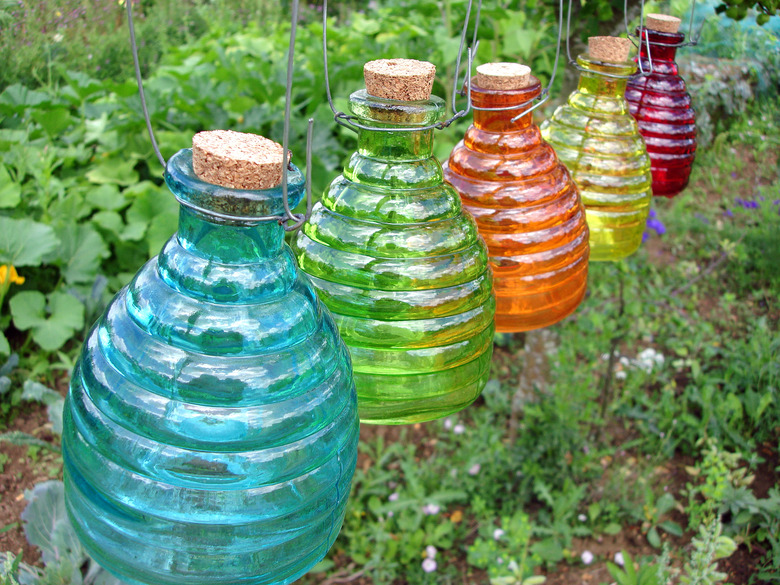How To Get Rid Of Meat Bees
We may receive a commission on purchases made from links.
You might ask yourself, "What's the difference between a yellow jacket and a meat bee?" and the answer would be, "Absolutely nothing." Yellow jackets look exactly like bees that eat meat, but only the meat part is correct. A yellow jacket is a species of wasp that, unlike any bee, survives on protein — in other words, meat — but there's no such thing as an actual meat bee.
With their striped yellow and black bodies, yellow jackets do bear an uncanny resemblance to bees, but they are hairless and have a thin, wasplike waist. They are also much more aggressive than bees and have painful stings that could be fatal to anyone attacked by a swarm or unusually sensitive to the toxins. Because yellow jackets are so aggressive and persistent and are usually present in large numbers, getting rid of them is not an easy task.
What Not to Do
What Not to Do
Yellow jackets are social insects like ants, and they live in a nest with a queen. It seems reasonable to assume that the best way to get rid of your problem is to destroy the queen along with the nest. It's usually fairly easy to spot the nest, which could be in the ground, in a tree trunk, in the siding of your house, or in some other place usually less than 1,000 feet from where the insects are disrupting your outdoor gathering. Don't try to destroy it yourself; hire a professional exterminator to do it.
You'll find plenty of advice on the internet counseling you to spray or dust the nest with insecticide, cover the opening with a bowl or some other barrier, or even try to flush out the insects with boiling water. You might have some success if you try one of these strategies at night when the wasps are least active, but the consequences of a miscalculation are pretty severe.
In particular, if you cover the hole for the nest, the insects will be forced to make another one, and it could be in an even worse location, maybe even inside your house. Also, don't underestimate the aggressiveness of yellow jackets; they will mercilessly swarm anyone who comes too close to the nest, even at night. It's far safer to hire a pro to destroy the nest.
Do Yellow Jacket Traps Work?
Do Yellow Jacket Traps Work?
You can buy yellow jacket traps at any hardware store, and there are multiple ways to make one. Perhaps the easiest is to cut off the top of a plastic soft drink bottle, invert it, and put it back in the bottle. Fill the bottle with an inch of sugary water (leftover soft drink is fine) and the wasps that enter to get the bait will either fall into the water or get stuck in the bottle.
You may catch plenty of yellow jackets with traps, but for each one you catch, the queen will produce several more, so you'll probably never get rid of the infestation this way. It doesn't hurt to catch some of them, and if you deploy a lot of traps, you'll catch a lot of them. However, they'll keep coming back until winter comes and the colony dies off, and luckily for you, no new yellow jacket colony will use that nest again.
Ways to Keep Yellow Jackets Away
Ways to Keep Yellow Jackets Away
If you really want to prevent yellow jackets from coming around, bring food outside only when you're actually eating it, keep it covered whenever possible, and avoid putting pet food outside. Keep your garbage cans covered and don't dispose of food scraps outside. It isn't just meat that yellow jackets crave; they like any protein-rich food, including cheese, nut butter, and eggs.
Peppermint oil repels yellow jackets, so if you're planning an outdoor party, mix a solution of peppermint oil and water and spray it generously around the gathering area. Yellow jackets are very territorial and won't build a nest in a place where there already is one, so in the early spring before the colony develops, you may want to deploy decoy nests around the property. That won't keep all species of yellow jackets away and it won't prevent them from nesting on a neighboring property, but it's worth a try.
